Suddenly, everyone wants to represent independent hotels. Raini Hamdi asks them why and guides you to a few new names. The traditional players meanwhile are restructuring themselves to stay relevant
BW PREMIER COLLECTION
What it is Best Western International (BWI) debuted the BW Premier Collection last March which comprises independent upscale and luxury hotels in major markets.
It describes the collection as a ‘soft brand’, as opposed to the existing Best Western Premier, which is its most upscale hotel offering and is a ‘hard brand’.
To decode, the collection is a distribution agreement, allowing independent hotels to participate in BWI reservation system and rewards programme. All other services that a hard brand enjoys, such as sales and revenue management support, training programmes, etc, can be had a la carte for a fee. Collection hotels must be upscale or luxury properties and are not required to complete a Property Improvement Plan (PIP) to meet BWI inspection standards.
Best Western Premier hotels, on the other hand, receive all the benefits a global brand has to offer and pay annual fees based on hotel size. “We expect some collection hotels will join Best Western once they see the strength and success the brand has to offer,” said Ron Pohl, BWI senior vice president of brand management.
Target Pohl estimates five hotels in Asia-Pacific to be members of BW Premier Collection in the next 12 months.
Why it’s needed It’s a “compelling” proposition to independent hotel owners to reduce reliance on OTAs, with no longterm commitment to the collection, according to BWI president & CEO David Kong.
Pohl added: “We are the only brand to offer a pay for performance model in the soft branding market and have a short-term agreement of only four years. We believe hotel owners should not pay for business they generate on their own and if we don’t perform, which is highly unlikely, they are not required to continue with the collection.”
Fee structure for owners Pay for performance only (see above).
Why it’s better than players that focus solely on independent hotels Pohl believed that while those players are respected brands, they do not offer the distribution, systems or support offered by BWI.
CURIO – A COLLECTION BY HILTON
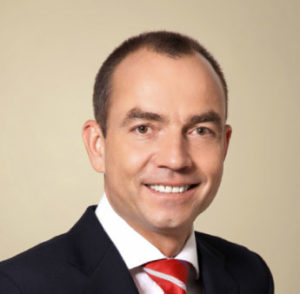
President,
Asia-Pacific Hilton Worldwide
What it is Curio is Hilton Worldwide’s 11th brand, competing
only at the top end of upper upscale and luxury segments and, as its name implies, comprises ‘something of interest, unique or even rare’, with the hotels embodying the distinct culture/spirit of their local communities.
Since its launch in June last year, there are five Curio hotels in the Americas and another 11 in the pipeline, including in Germany, Jamaica and the US. In Asia-Pacific, the chain is in discussions with various potential owners.
Target Asked about its progress in Asia-Pacific, Martin Rinck, Hilton Worldwide president, Asia-Pacific, did not go into numbers, saying: “Our growth strategy is to establish the right product in the right market.” There is “great potential” as independent hotel owners will appreciate the association to Hilton Worldwide, which has been operating in the region for over 50 years, he said.
Why it’s needed Travellers are increasingly looking for a hotel that meets their desire for local discovery and authentic local experiences, said Rinck. Owners have access to Hilton’s global infrastructure, from sales and revenue support to marketing, public relations and a database of 45 million Hilton HHonors loyalty members.
Fee structure for owners Similar to Hilton Worldwide’s other brands’ management and franchising agreements.
Why it’s better than players that focus solely on independent hotels Rinck said a 95-year hospitality legacy, with a global portfolio of over 4,350 hotels, speaks for itself. The chain has invested in its brands and people, established an effective global infrastructure that delivers success to its hotels and, because of its global scale, can tap into hotel management expertise and experience worldwide to deliver best-in-class products and services.
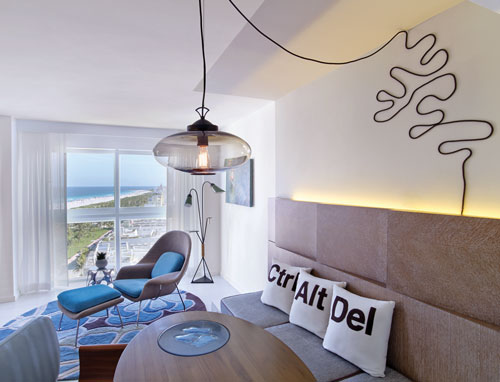 Royal Palm South Beach Miami, part of Tribute Portfolio
Royal Palm South Beach Miami, part of Tribute Portfolio
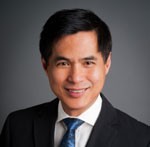
President,
Asia-Pacific Hilton Worldwide
TRIBUTE PORTFOLIO
What it is Tribute Portfolio debuted last April as Starwood Hotels & Resorts Worldwide’s 10th brand, promising owners and guests the ability to ‘Stay Independent’. It has a firm focus on upper upscale independent hotels.
To the question on whether Tribute will dilute The Luxury Collection, Stephen Ho, president, Starwood Asia Pacific Hotels & Resorts, gave a firm no. The Luxury Collection clearly offers a five-star experience and product, he said, while Tribute fits into the four- to five-star/upper upscale independent hotel segment globally, where over 60 per cent of these hotels are unaffiliated with any brand.
He added: “We are building a brand that is driven by storytelling around our individual properties and that makes our launch and ongoing marketing strategy a bit different than that of our other nine brands. We’re focused on building out the ‘Stay Independent’ stories that exist at each of our properties and showcasing those stories to our members and guests in interesting ways.”
Target Globally, the target is for 100 hotels under Tribute in the next couple of years. Asia-Pacific, which accounts for about 60 per cent of Starwood’s future pipeline by number of rooms, will occupy a fair share of this target.
Why it’s needed It gives Starwood the opportunity to expand into locations where it has little or no representation, provides Starwood Preferred Guest (SPG) members with more access to great destinations, and owners the chance to tap into the chain’s loyalty programmes and centralised systems while staying independent, said Ho.
Fee structure for owners A centralised service fee bundle around seven to eight per cent of gross room revenue.
Why it’s better than players that focus solely on independent hotels Ho singled out a few key factors: (a) Starwood’s strong knowledge base that is heavily weighted in the upper upscale and luxury segments (b) strong track record in delivering returns to owners (c) long history in creating and marketing the hospitality’s original collection brand with The Luxury Collection and (d) its powerful loyalty platforms, distribution channels and global sales network.
CHIC COLLECTION
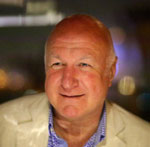
Founder/CEO
Chic Collection
What it is It started in 2002 with the launch of a book on mexicochic
by founder/CEO Nigel Bolding. Forty editions of chic books later, the collection has become an online travel club aimed at connecting chic independent hotels to chic independent travellers.
Asked how different it is to OTAs, Bolding said while OTAs are now a dominant way of life, they are in essence an e-commerce platform that lists every available type of accommodation. “Chic Collection has to remain niche and distinctive, fun yet attractive,” he said. “We still see consumers coming to us offline to benefit from our property and destination knowledge. Sending our partner hotels bookings is crucial but it’s not the only objective; we are also storytellers and brand-builders for our partner hotels.”
Target Bolding is targeting at least 30 additional members by yearend as Asia-Pacific is booming, with a lot of great new hotel concepts being developed across the region, he said. Chic is opening an office in Hong Kong and is also launching the first online edition of newzealandchic later this year, with the participation of 25 chic hotels and lodges in New Zealand.
“This is a way of re-connecting with our publishing past as we endeavour to provide consumers with valuable travel information, great imagery and useful tips,” said Bolding.
Why it’s needed With the global financial crisis in 2008 and higher broadband speeds, Bolding realised “an urgent need” by small hotels for global marketing support and by discerning travellers whose information needs are rapidly expanding.
Said Bolding: “We are focusing on attracting the ‘right type’ of traveller and connecting them with the ‘right type’ of hotel, in much the same way that 30 years ago Leading Hotels of the World (LHW) was right for its time, and Small Luxury Hotels 20 years ago.
“The next generation of travellers over the coming 20 years is looking for experiences, differences, personality, character. Hotels are not an isolated commodity but part of a greater movement. We only need to look to China, the fastest and largest growing market of them all to see the trend of Chinese moving away from larger hotel chains to smaller, chic hotels on their travels. It is now more prestigious to come back from a trip having stayed in an undiscovered gem rather than a seven-star hotel.”
Fee structure for owners Flexible fee structure based on a menu of options, from technology to travel shows to provision of content.
Why it’s better than competitors All the services and distribution of chains and the LHW’s of the industry “but with greater flexibility, better value for money and a menu of additional marketing support services”, said Bolding. When said they have established distribution and loyalty programmes, he said: “We offer agencies fantastic content resources through our travel guides and special insights into different destinations. Our member hotels can be booked on the GDS under our private label code FF with competitive commissions. We are developing a loyalty programme and our customers, based on their travel habits, will divided into three different tiers: Ultra Chic, Tres Chic and C’est Chic members.”
DESTINATIONELITE
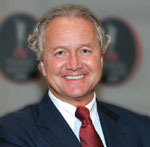
Founder/CEO
DestinationElite
What it is Founded five years ago by former Leading Hotels of the World (LHW) Asia-Pacific CEO, Mark Greedy, DestinationElite (DE) showcases, distributes and sells “the finest, together”, B2C and selective B2B. It now boasts more than 200 hotels, resorts, cruises and travel experiences in 200 destinations in 82 countries.
In 3Q, it will introduce even more specialised luxury segments, including AdventureElite, SuiteElite, CruiseElite, RetreatsElite and AirElite, and an enhanced EliteLiving-Real Estate and a more defined EliteLuxury. It recently introduced DestinationElite Quality Assurance (customised service audits and consultation) and DestinationElite Events.
Target DE is forecasting a 45 per cent increase in revenue this year over 2014 with its hotels/resorts averaging just over US$750 per night. It claims some 200,000 ‘Friends of Elite’ currently.
Why it is needed According to Greedy, experienced connoisseurs and aficionados couldn’t care less for independence – they simply want the best and DE has evolved to be that platform and includes “true” luxury hotel brands including Peninsula, Mandarin Oriental, Oberoi, Banyan Tree , Silversea Cruises, etc.
“Independence is a nice editorial label, but has no real merit,” said Greedy. “I also sense that the focus on ‘independent hotels’ by some (of the hotel chains) is neither due to consumer demand nor an outstanding segmentation strategy but primarily as a consequence of commercial circumstances,.”
Fee structure for owners “I would not pay anyone 10 per cent of my hotel’s room revenue,” said Greedy. “Our approach is to provide true luxury B2C marketing expertise and customised support and strategy to achieve the defined objectives of the owner and/or management of luxury products no matter the channel or global region focus.”
Why it’s better than competitors Greedy said proven excellence, and the value of associating with the elites.
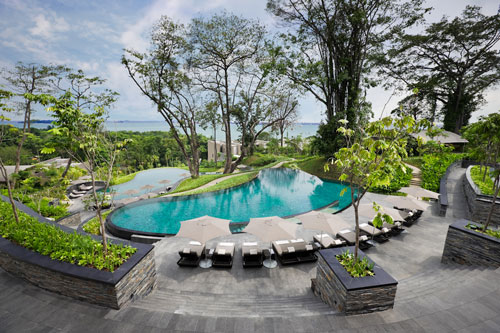 Capella Singapore, an Elite member
Capella Singapore, an Elite member
This article was first published in TTG Asia, July 17, 2015 issue, on page 16. To read more, please view our digital edition or click here to subscribe.




















